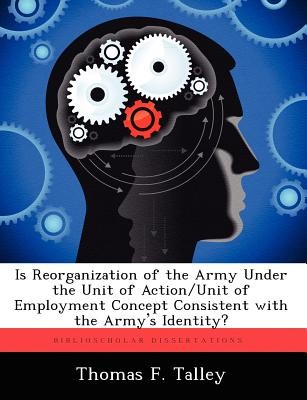
- We will send in 10–14 business days.
- Author: Thomas F Talley
- Publisher: BiblioScholar
- ISBN-10: 124937006X
- ISBN-13: 9781249370062
- Format: 18.9 x 24.6 x 0.8 cm, softcover
- Language: English
- SAVE -10% with code: EXTRA
Is Reorganization of the Army Under the Unit of Action/Unit of Employment Concept Consistent with the Army's Identity? (e-book) (used book) | bookbook.eu
Reviews
Description
Currently, reorganization of the Army under the Unit of Action/Unit of Employment (UA/UE) concept has focused exclusively on the mechanics of conversion. This thesis argues that the process must begin with an appreciation of the Army's identity as a strategic force for the nation? This thesis argues that reorganization of the Army under the UA/UE concept is consistent with the Army's identity, provided an end state is articulated, which is currently lacking. That end state must be a holistic force structure; one that is based on identity, not on threats or capabilities. This thesis fills the existing void by providing a force structure that truly reflects the Army's identity. As a foundation for this force structure, this thesis examines the Army's identity as a strategic force, the current Army organization, the UA/UE force structure, and the underlying concepts driving and supporting the UA/UE conversion. The resulting force structure is then tested against four criteria: doctrine, organization, training, and leadership. Two elements are noteworthy. First, this force design rejects the concept of modularity in favor of a more tailored approach. Secondly, the operational effectiveness of this force structure is further increased by the development and institutionalization of a force stabilization system. This thesis demonstrates how a force stabilization system is integrated into a force structure.
EXTRA 10 % discount with code: EXTRA
The promotion ends in 16d.07:55:37
The discount code is valid when purchasing from 10 €. Discounts do not stack.
- Author: Thomas F Talley
- Publisher: BiblioScholar
- ISBN-10: 124937006X
- ISBN-13: 9781249370062
- Format: 18.9 x 24.6 x 0.8 cm, softcover
- Language: English English
Currently, reorganization of the Army under the Unit of Action/Unit of Employment (UA/UE) concept has focused exclusively on the mechanics of conversion. This thesis argues that the process must begin with an appreciation of the Army's identity as a strategic force for the nation? This thesis argues that reorganization of the Army under the UA/UE concept is consistent with the Army's identity, provided an end state is articulated, which is currently lacking. That end state must be a holistic force structure; one that is based on identity, not on threats or capabilities. This thesis fills the existing void by providing a force structure that truly reflects the Army's identity. As a foundation for this force structure, this thesis examines the Army's identity as a strategic force, the current Army organization, the UA/UE force structure, and the underlying concepts driving and supporting the UA/UE conversion. The resulting force structure is then tested against four criteria: doctrine, organization, training, and leadership. Two elements are noteworthy. First, this force design rejects the concept of modularity in favor of a more tailored approach. Secondly, the operational effectiveness of this force structure is further increased by the development and institutionalization of a force stabilization system. This thesis demonstrates how a force stabilization system is integrated into a force structure.


Reviews